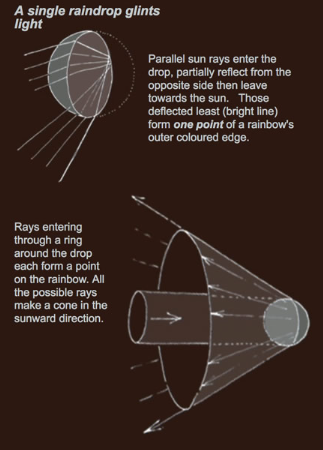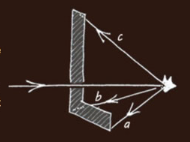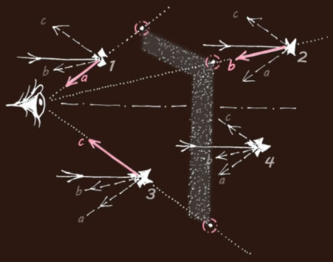Why are there rainbows?
Why Are There Rainbows?
Rainbows are one of nature's most captivating optical phenomena, but have you ever wondered why they appear in the sky? The answer lies in the intricate interplay of light, water droplets, and the observer's perspective. While the existing content provides a basic understanding of rainbows, let's delve deeper into the science behind these mesmerizing arcs of color.
The Formation of Rainbows
When sunlight passes through raindrops suspended in the air, it undergoes a series of complex interactions that result in the formation of rainbows. Each raindrop acts as a tiny prism, bending and dispersing the incoming sunlight into its constituent colors. The process can be broken down into the following steps:
- Incident Light: Sunlight, which is composed of a spectrum of colors, enters the raindrop.
- Refraction: As the light enters the raindrop, it slows down and bends due to the change in medium. This bending, known as refraction, causes the different colors to separate.
- Reflection: Once inside the raindrop, the light rays undergo multiple internal reflections against the inner surface of the droplet.
- Refraction (Again): After reflecting inside the raindrop, the light exits back into the air. As it does so, it refracts again, bending further.
- Dispersal: The refracted light leaves the raindrop at various angles, dispersing into a circular pattern of colors.
- Observer's Perspective: To see a rainbow, the observer must be positioned with their back to the sun. The sunlight enters the raindrops in front of them and creates a circular arc of colors in the opposite direction.
The Circular Shape of Rainbows
Rainbows are circular because they are formed by an accumulation of raindrops spread across the sky. Each individual raindrop contributes to a specific point on the rainbow. However, since there are countless raindrops, their collective contributions form a complete circle. The observer on the ground sees only a portion of this circle, resulting in the familiar arc shape.
Patterns in the Sky
Rainbows are just one example of the fascinating patterns that can be observed in the sky. From halos and glories to coronae and complex geometric forms like Parry arcs, the sky is a canvas for optical wonders. These patterns arise due to the scattering, diffraction, and refraction of light by various atmospheric particles, such as droplets, ice crystals, and dust.
The Reproduction of Scattering Patterns
The reproduction of scattering patterns from individual particles on a larger scale is a remarkable phenomenon. Millions of particles, each with their own scattering pattern, combine to create the intricate patterns we observe in the sky. The process involves an accumulation of individual contributions, resulting in a replication of the original pattern but in the opposite direction relative to the sun's rays and often inverted.
Generalization of Scattering Patterns
The concept of generalization applies to all scatterers in the atmosphere. Any scattering pattern produced by a single raindrop, droplet, ice crystal, or dust particle will appear in the sky if there is a cloud of similar particles. The patterns appear opposite to the sun's rays and upside down. For symmetrical scattering patterns like circular rainbows, coronae, and glories, the inversion often goes unnoticed.
In summary, rainbows are formed through the refraction, reflection, and dispersion of sunlight by raindrops. The circular shape of rainbows arises from the collective contributions of countless raindrops spread across the sky. These patterns in the sky are replicated through the accumulation of individual scattering patterns from various atmospheric particles. Understanding the science behind these atmospheric optics phenomena adds a sense of wonder to our appreciation of nature's beauty. So next time you catch a glimpse of a rainbow, take a moment to marvel at the intricate processes that make it possible.

Why are there rainbows?
Michiel de Boer (Tele Sunsets) pictures primary and secondary bows arcing a Netherlands sky. Alexanders dark band shows nicely. More images below.
Why are rainbows circular. Why do we see these and other highly geometric patterns in the sky?
Image ©Michiel de Boer, shown with permission

A single raindrop glints
light
Rays entering through a ring around the drop each form a point on the rainbow. All the possible rays make a cone in the sunward direction.
Parallel sun rays enter the drop, partially reflect from the opposite side then leave towards the sun. Those deflected least (bright line) form one point of a rainbow's outer coloured edge.

The sky transform ~ Why do we see patterns in the sky, rainbows, halos, glories..?
A single raindrop does not a rainbow make. How does the sunward deflected light from a single raindrop transform into a huge rainbow in the sky opposite the sun? Millions of raindrops across the sky must contribute individual rainbow speckles but how do they reproduce the pattern of light from a single raindrop? The problem is actually a more general one. An individual ice crystal refracts and reflects sunlight and millions of them combine somehow to form a highly geometric halo. An individual cloud droplet forms a diffraction pattern that is somehow projected on the sky by the combined action of millions of droplets. How then is the scattering pattern of an individual droplet, ice crystal or raindrop writ large upon the sky?

Let's look at an abstract particle that magically (we need not enquire how) scatters sun rays backwards in the shape of a capital letter "L". That is chosen not from some egomania wish for skywriting of my initial but because the symbol's extremities are defined by just three scattered rays which we can label 'a', 'b' and 'c'. Furthermore, "L" has a 'handedness', its flipped mirror image form is distinguishable from the original. Let's make a further abstraction by only considering the three extremity rays. They are sufficient because they uniquely define the "L".
L in the sky
Imagine the sky filled with a cloud of these magical particles at a range of distances. Each one of them individually scatters backwards three rays in directions 'a', 'b' and 'c'. There is no interaction between them, they all act in
isolation.

Now imagine a one-eyed, cyclopean, observer. What does the eye see? Particle '1' is so
placed that its ray 'a' (and only ray 'a') reaches the eye. The eye sees a bright glint in that
direction which is at a corner of the "L'. Similarly the eye sees a glint from ray 'b'
scattered by particle '2. Ray 'c' from particle '3' makes a third glint in the sky.
What about all the other millions of particles? Take one of them in an arbitrary position '4.
None of its three rays 'a','b' or 'c' reach the eye. No glint is seen. It glints its light elsewhere and might be seen by another creature but to our cyclops it is dark. Similarly all the other particles are dark.
The three glinting particles define an "L" in the sky having the same angular aspect to the eye as the scattering angles of the individual 2 particles. There are differences. The "L" appears in the opposite direction - relative to the sun's rays - to that of the particle scattering pattern. The "L" is also inverted.
Generalisation - rainbows, halos, glories, coronae...
Any shaped scattering pattern or light distribution can be constructed from enough (if necessary infinitesimal) triangular elements. Therefore the demonstration above holds true for all scatterers. Any scattering pattern made by a single raindrop, droplet, ice crystal or dust particle etc will appear in the sky if there is a cloud of similar particles. The pattern appears in the opposite direction relative to the sun's rays and upside down. A single particle scattering pattern directed sunwards will appear in the sky opposite the sun, one directed forwards mainly along the sun ray direction will appear near the sun. Inverted? We do not notice that the pattern is inverted for symmetrical scattering patterns like circular rainbows, coronae and glories.
Thus we see a rainbow opposite the sun from millions of raindrops scattering light towards the sun in a cone shape. We see a corona around the sun from a cloud of droplets diffracting light mainly forwards with the sun's rays. We see the complex geometric form of Parry arcs from a cloud of peculiarly oriented ice prisms.


Note: this article has been automatically converted from the old site and may not appear as intended. You can find the original article here.
Reference Atmospheric Optics
If you use any of the definitions, information, or data presented on Atmospheric Optics, please copy the link or reference below to properly credit us as the reference source. Thank you!
-
<a href="https://atoptics.co.uk/blog/why-are-there-rainbows/">Why are there rainbows? </a>
-
"Why are there rainbows? ". Atmospheric Optics. Accessed on November 26, 2024. https://atoptics.co.uk/blog/why-are-there-rainbows/.
-
"Why are there rainbows? ". Atmospheric Optics, https://atoptics.co.uk/blog/why-are-there-rainbows/. Accessed 26 November, 2024
-
Why are there rainbows? . Atmospheric Optics. Retrieved from https://atoptics.co.uk/blog/why-are-there-rainbows/.